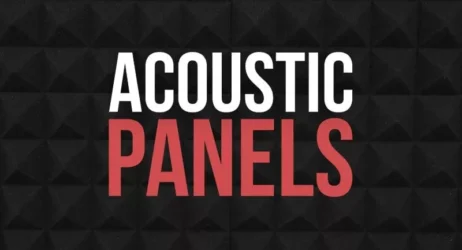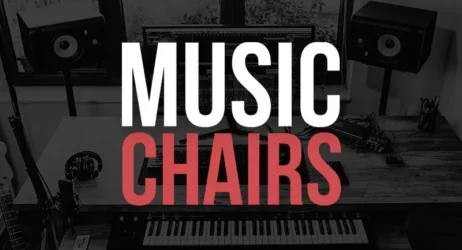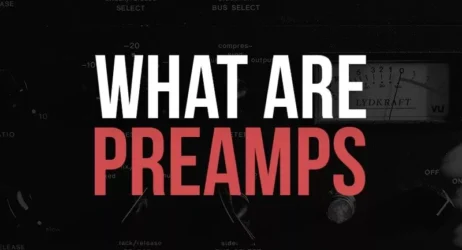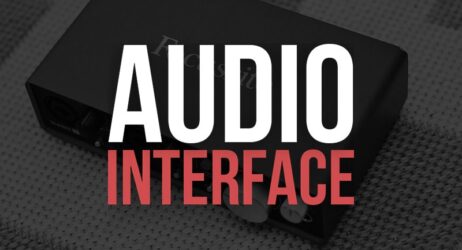This guide will answer what is a pop filter, what it’s used for, video examples of tests with and without pop filters, and the best affordable pop filters.
What Is A Pop Filter?
A pop filter is a noise protection filter for microphones. It is used in recording studios to reduce or eliminate popping sounds which is the mechanical effect of fast-moving air on the microphone from plosives during recorded singing and speech.
- What Is a Pop Filter
- What Does a Pop Filter Do
- What Is a Pop Filter Used For
- Is a Pop Filter Necessary
- How Do You Use a Pop Filter
- Do Condenser Mics Need Pop Filters
- Where Do You Put the Pop Filter
- What Are the Best Pop Filters
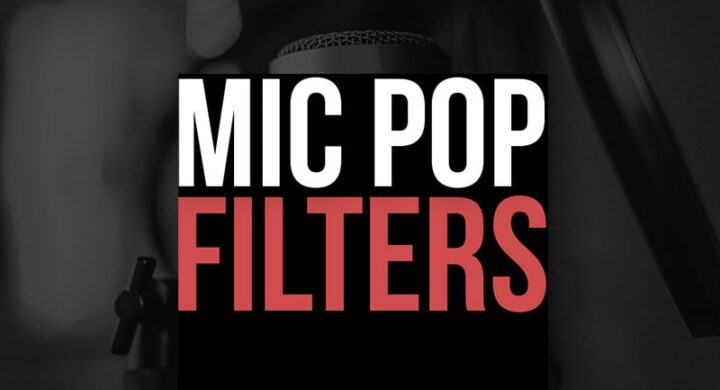
What Is a Pop Filter?
A pop filter is a device used to protect the mic from plosive energy. It helps to eliminate the popping sound associated with wind gusts created from the human voice and other sources. Microphone pop filters work by dispersing the transient sound energy between a mic capsule and a sound source. Pop filters are also known as pop shields or pop screens.
When we talk about microphone plosives, we are referring to human speech. Plosive sounds are created by fully blocking the flow of air as it leaves the mouth, followed by a gush of air produced along with the sound as the blocked air is released.
In the English language, there are six plosive sounds:
- P
- B
- T
- D
- K
- G
It is important to note that different languages have different plosive sounds. When a plosive hits the diaphragm, it causes a massive pressure difference between the back and front of the diaphragm as the blast of air passes by. This causes an asymmetrical peak/clip in the microphone signal, known as microphone plosives.
A pop filter is often disc-shaped and is made from acoustically semi-transparent material. Woven nylon is stretched over a circular frame or a thin metallic circle. This material aims to allow sound waves to pass through but dissipate the blast of air caused by plosives.
So when a plosive from a vocalist’s mouth hits the pop filter, the sounds waves pass through, but the gust of air is dispersed effectively. The placement of the pop filter is critical and, therefore, should be done consciously.
There are two main types of common pop filters:
- Nylon Mesh Pop Filters
- Metallic Mesh Pop Filters
I have discussed how each one is different from the other.
Nylon Mesh Pop Filters
| PROS | CONS |
| A great choice for beginners as they are cheaper to buy | Although it works great for removing plosives, removal of high frequencies is usually not possible with these filters |
| There are many options available at reasonable prices | The material is very delicate and damages easily |
| Apart from being inexpensive, they have become standard in the music industry | Low durability and flexibility. They are also hard to clean |
Metallic Mesh Pop Filters
| PROS | CONS |
| The metal grating is designed with larger holes that have less effect on high frequencies | The thin metal sheet is prone to bending and can be hard to restore to its original state |
| The material is durable and robust. It is also easy to clean with some soap and a cloth | Metallic filters tend to develop a slight whistling sound with the time that is audible to professionals |
| They are smaller in size and preferred by performers |
What Does a Pop Filter Do?
A pop filter acts as a sieve for disruptive sounds that may spoil the voice recording or vocal of a song. A pop filter protects against natural salts from saliva, eroding the microphone and decreasing its durability. It also keeps moisture off the microphone as a shield; thus it helps to prevent mechanical faults with the microphone.
The main purpose of a pop filter is to eliminate ‘popping’ noises when you speak or sing into a microphone. When we say that a word has ‘plosives’, we are referring to words like ‘people’ and ‘pretty’, which have a ‘P’ in the word. These sounds create sudden air pressure that causes the microphone to overload. The same concept applies to when someone laughs in the microphone. The rush of air causes the microphone to pop.
A pop filter is placed in front of the microphone to eliminate this fast-moving air. It is usually attached to the microphone stand, but if you have a podcast-style table microphone stand, then you won’t be able to attach the pop filter.
What Is a Pop Filter Used For?
A pop filter is used to minimize the ‘popping’ sound that is created when air moves at a fast pace through a microphone causing a disruptive and unflattering sound.
Before investing in a pop filter, it is important to assess what you want to use it for. Do you want to use it in a studio recording, a live performance, or for practice at home? It would help if you considered the following when sifting through the available pop filter options.
Studio Recording
Recording in a studio is challenging, and you have to remove plosives that negatively affect the audio. Most recording studios invest in the best and most expensive brands when it comes to pop filters, as it is easier for sound engineers to simply clamp up a pop filter in front of the mic and save editing time.
Live Performance
It is important that an audience doesn’t hear distortion blasting through speakers during a live performance.
Practice At Home
A less pricey pop filter option is a smart way to start your at-home practice if you are just starting your audio journey.
Is a Pop Filter Necessary?
A pop filter is not always necessary. A simple microphone technique is to place the microphone a little off-axis to the vocalist’s mouth. That way, the vocalist does not sing directly into the microphone but sings sideways to it. You should keep in mind that sometimes, a pop filter can end up making your vocals sound less bright.
The use of pop filters largely depends on the purpose for which it is used. While it may be absolutely necessary for recording in a studio, it might not be crucial for recording a podcast.
How Do You Use a Pop Filter?
You can use three main types of pop filters:
- Clip-on mesh/nylon that can be clipped onto the mic stand with an arm that you can position however you want.
- Clip-on metal pop filters
- Microphone attached
In music recordings, it is better to use either the clip-on metal pop filters or the microphone attached. The choice depends on how experienced the performer is. The advantage of the clip-on pop filters is that they can be used with any microphone and still provide excellent results.
You can watch this video to see how you can install a pop filter on different mediums:
Do Condenser Microphones Need Pop Filters?
You need a pop filter with a condenser microphone because it reduces the sounds from plosives. When you use a condenser mic without a pop filter, the result can be loud, unpleasing, and intrusive sounds. If you want to achieve professional-quality sound, it’s better to invest in a decent pop filter.
Most condenser microphones have a pop filter inside, but they aren’t strong enough to handle loud plosives. However, they work well in perfect conditions, assuming that you have a state-of-the-art recording studio and professional recording skills.
Related: Condenser Microphones
Where Do You Put the Pop Filter?
Position the pop filter close to the microphone, but it should not be touching it. Angle the pop filter and the microphone to 10 o’clock or 2 o’clock position. This will further eliminate the effects of plosive sounds. A 2” to 6” distance between the microphone and the shield is adequate but can be adjusted according to personal preference.
How far the pop filter is placed depends on the amount of energy that the performer is expected to express during recording. The more the pop filter is placed from the microphone, the lesser the ‘popping’ sound.
When positioning a pop filter, follow the ‘one-fist rule’ and place the pop filter one fist-length away from the microphone. It should be placed in a way that covers the front of the microphone capsule from the performer’s mouth. The idea is to filter away all the plosives between the microphone diaphragm and the performer’s mouth. The position of the performer varies depending on the style of voice work.
Sometimes, it takes trial and error to find the proper distance that suits the ambiance of the room, the style, and the genre of the song. You can watch this video to learn how you can set up your pop filter:
What Are the Best Pop Filters?
Here is a collection of the best-selling pop filters on Amazon
Last update on 2025-10-28 / Affiliate Disclaimer
Summary of Pop Filters
Pop filters are noise protection filters for microphones. Popping sounds, which are caused when air moves rapidly across the microphone during recordings of singing and speech, are reduced or eliminated by this device.
I hope you have a good understanding of what a pop filter is, and how to use them.



![Pop Filter,PEMOTech [Upgraded Three Layers] Metal Mesh &...](https://m.media-amazon.com/images/I/51ErUAzNUmL._SL160_.jpg)



